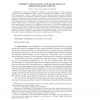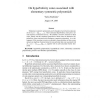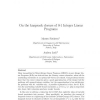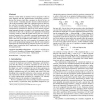52 search results - page 1 / 11 » Hyperbolic Programs, and Their Derivative Relaxations |
80
Voted
FOCM
2006
15 years 1 months ago
2006
We study the algebraic and facial structures of hyperbolic programs, and examine natural relaxations of hyperbolic programs, the relaxations themselves being hyperbolic programs.
97
Voted
SIAMAM
2000
15 years 27 days ago
2000
We study the stability and oscillation of traveling fronts in a three-component, advection-reaction biodegradation model. The three components are pollutant, nutrient, and bacteria...
101
Voted
OL
2008
15 years 1 months ago
2008
Elementary symmetric polynomials can be thought of as derivative polynomials of En(x) = i=1,...,n xi. Their associated hyperbolicity cones give a natural sequence of relaxations f...
105
Voted
ENDM
2010
14 years 10 months ago
2010
Many inequalities for Mixed-Integer Linear Programs (MILPs) or pure Integer Linear Programs (ILPs) are derived from the Gomory corner relaxation, where all the nonbinding constrai...
235
Voted
POPL
2009
ACM
16 years 1 months ago
2009
ACM
Memory models define an interface between programs written in some language and their implementation, determining which behaviour the memory (and thus a program) is allowed to hav...




